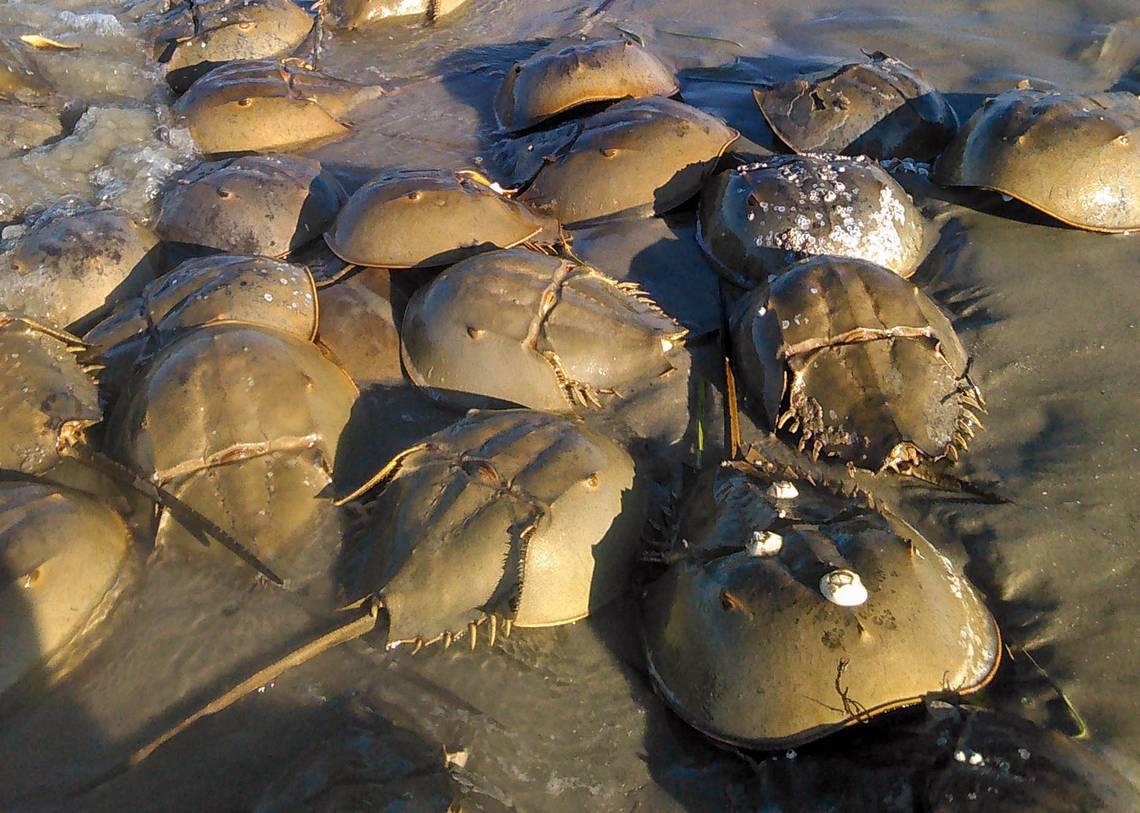The Horseshoe Crab: Ancient Mariners of the Ocean
Horseshoe crabs are fascinating animals. They’ve been around for over 450 million years! That’s longer than the dinosaurs. And guess what? They aren’t true crabs. They’re actually more like spiders and scorpions.
What They Look Like
You can easily spot a horseshoe crab. They have a round shell, a long tail called a telson, and ten legs tucked under their body. Their big eyes are on the sides of their shells. They also have smaller light-sensitive patches to help them see better underwater. Their tail isn’t for fighting. It helps them flip back over if they fall on their backs. They also have gills that look like book pages. These help them breathe in the water.
Where They Live
Most horseshoe crabs hang out along the Atlantic and Gulf coasts of North America. The most common type is called Limulus polyphemus. There are also types in Asia, like Tachypleus tridentatus. They prefer shallow waters, estuaries, and sandy beaches. They play a big role in their environment.
Breeding and Lifespan
In spring and summer, horseshoe crabs make their way to sandy beaches to lay eggs. Females can lay thousands of eggs all at once. These eggs are a critical food source for birds, especially the red knot. After about two weeks, baby crabs hatch and stay in shallow water to grow. They can live for over 20 years and shed their shells several times before they become adults.
Why They Matter in Medicine
Horseshoe crabs have blue blood that is really important in medicine. Their blood contains something called Limulus Amebocyte Lysate (LAL). This helps test medical tools and vaccines for bacteria. Thanks to horseshoe crabs, many lives have been saved. However, more people are looking for LAL, which is putting pressure on horseshoe crab populations. Scientists are trying to find alternatives, but it’s still a work in progress.
Conservation Issues
Horseshoe crabs face challenges, like habitat loss, climate change, and overharvesting for bait and medicine. We need to step up. Protecting their homes and managing how they are caught can help them thrive. Some groups are also pushing for more synthetic options to reduce reliance on real horseshoe crabs.
Their Role in the Ecosystem
Horseshoe crabs do a lot for their ecosystems. Their eggs provide food for migratory birds and they are a meal for many sea animals. By supporting these creatures, they help keep coastal ecosystems healthy.
How We Can Help
Horseshoe crabs are essential for nature and human health. Here are some steps we can take:
1. Control Catching: Set rules for how many horseshoe crabs can be collected for bait and medicine. Some areas are already protected to help them.
2. Use Alternatives in Medicine: Encourage the use of synthetic testing methods. This can help reduce the need for horseshoe crabs.
3. Restore Habitats: Fix up beaches where they lay their eggs. Planting vegetation can create safe spaces for them.
4. Teach the Public: Raise awareness about how important horseshoe crabs are. Beachgoers can learn how to help crabs that are flipped over.
5. Get the Community Involved: Engage locals in monitoring horseshoe crab activities. Programs that let people collect data can strengthen ties to nature.
Using Technology for Conservation
New tools like GPS tagging and underwater drones help track horseshoe crabs. This information is key for making smart management plans.
Working Together Globally
Horseshoe crab populations are dropping in Asia too. We need to share ideas and solutions with other countries to protect them.
Act Today
Horseshoe crabs are amazing creatures and very important. Protecting them matters for our coastal areas and health. Through conservation and education, we can help these ancient animals survive for future generations.
By using these strategies, we can help protect horseshoe crabs without sacrificing our own needs. These ancient animals are survivors, but they need our help. Supporting conservation and being mindful are ways to ensure their future.
